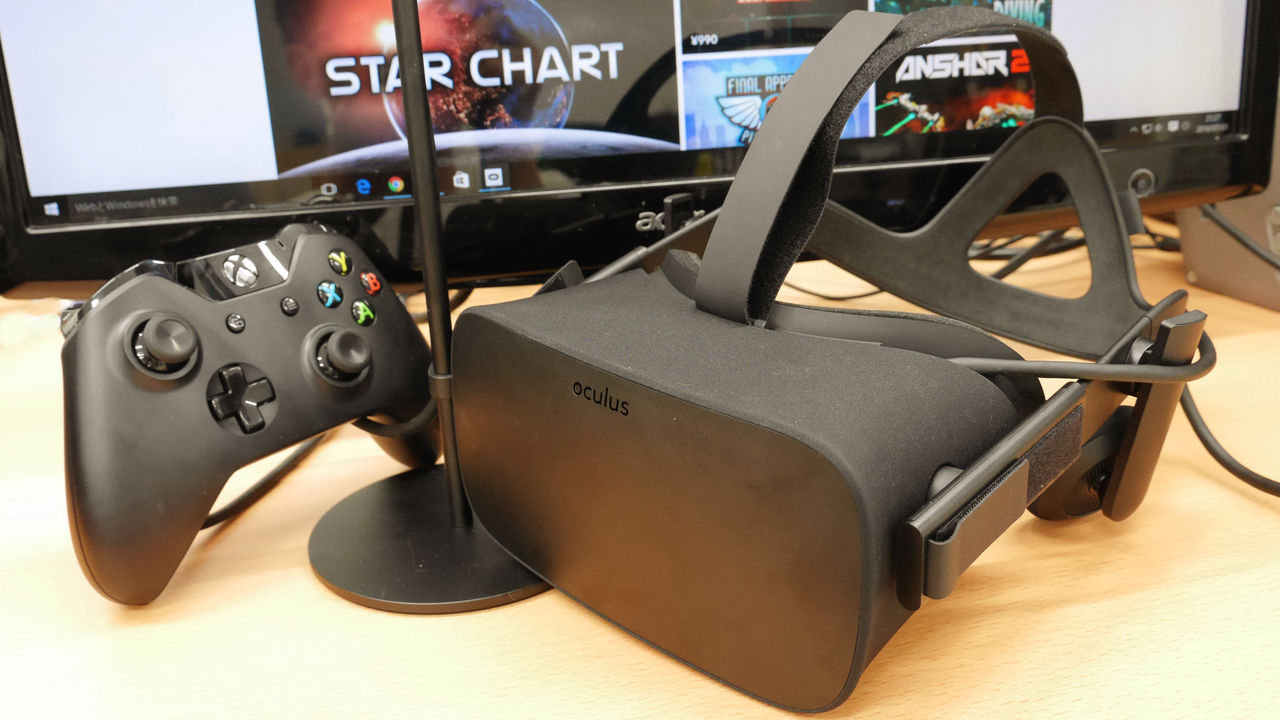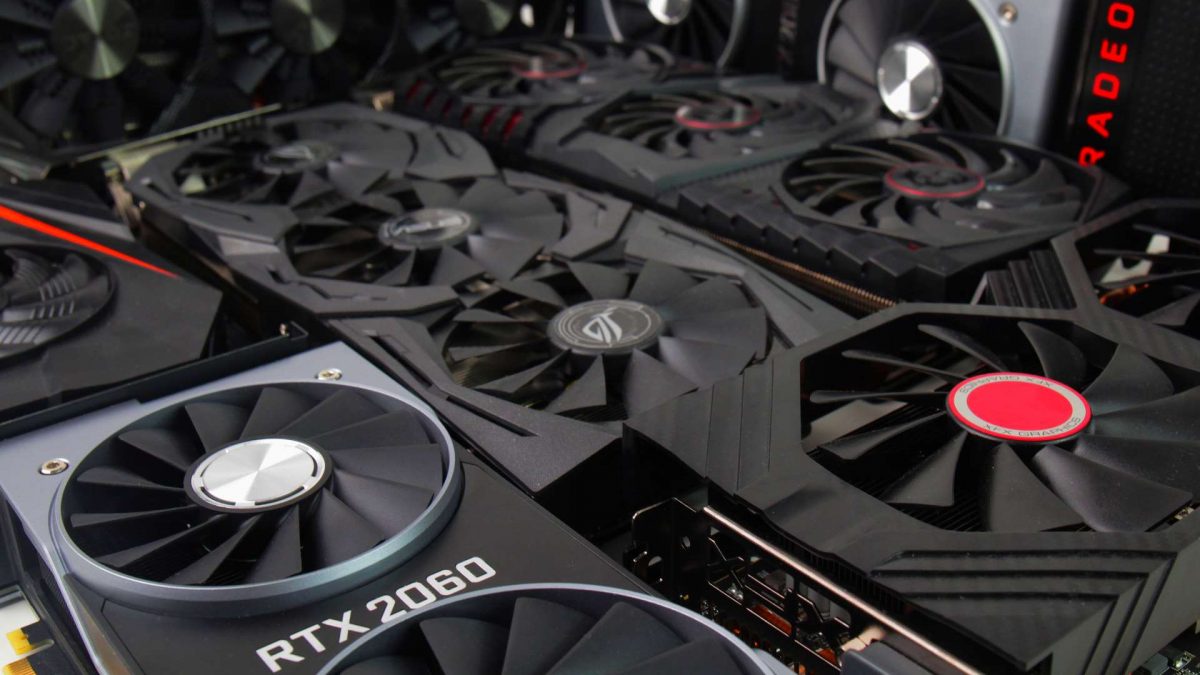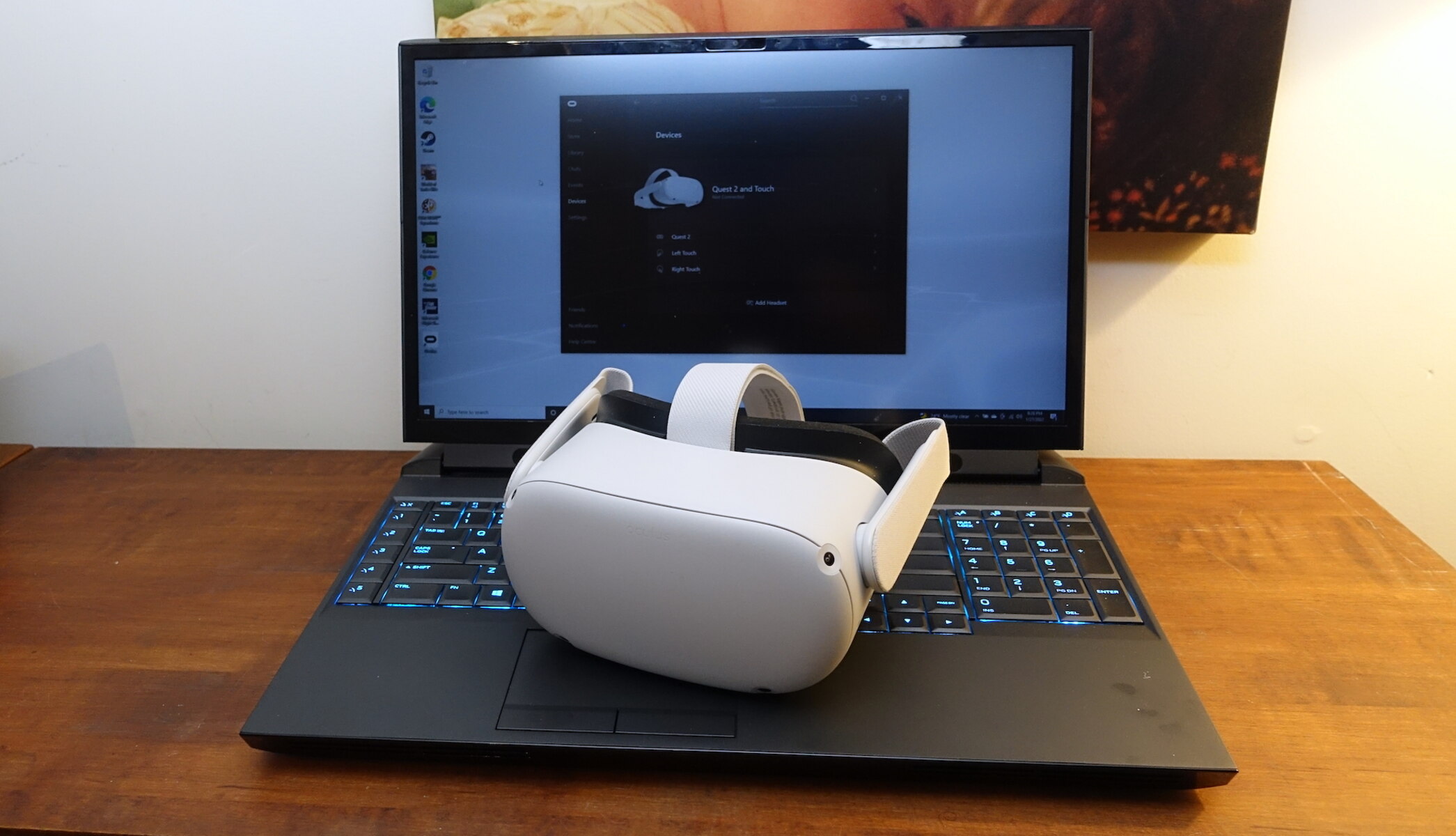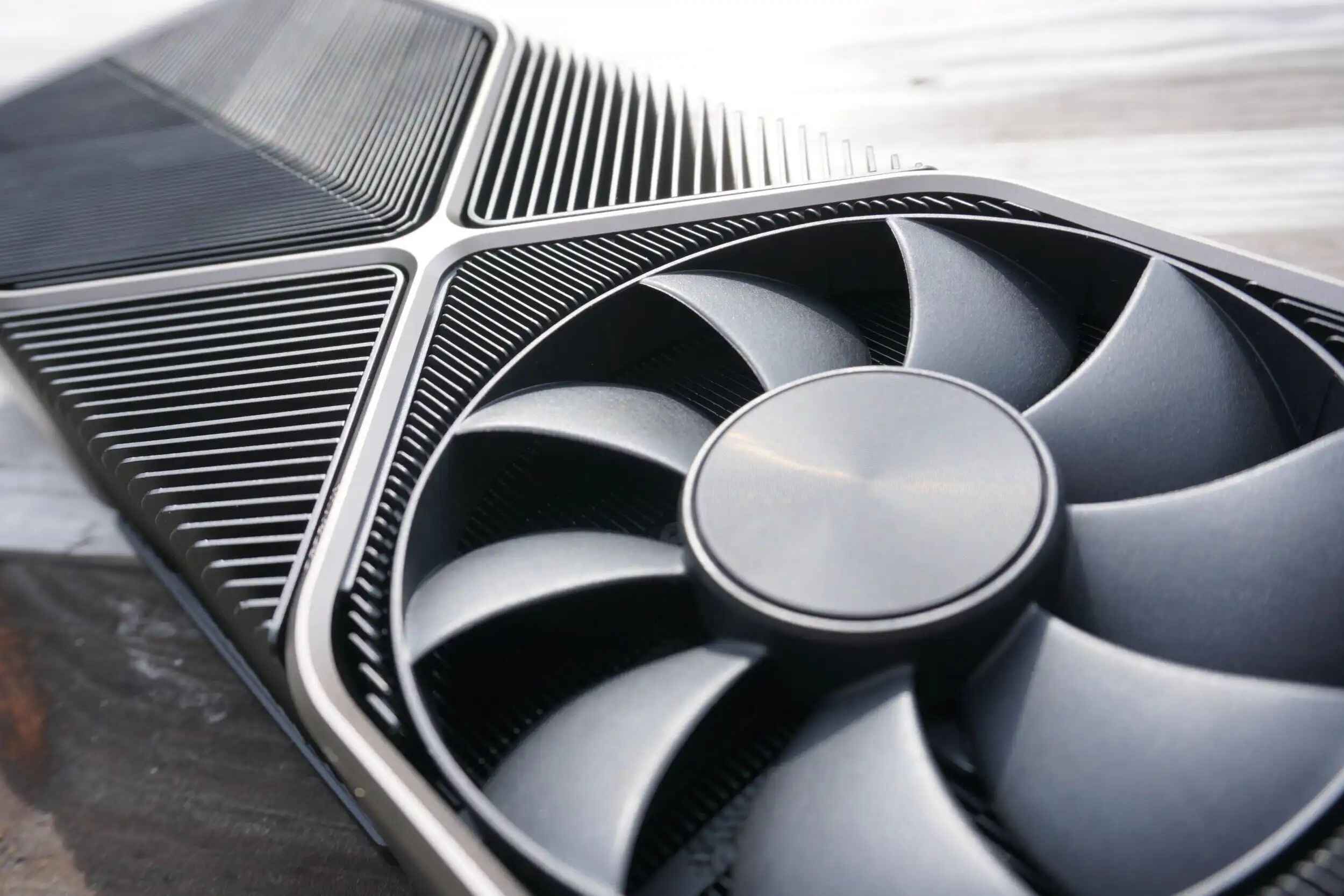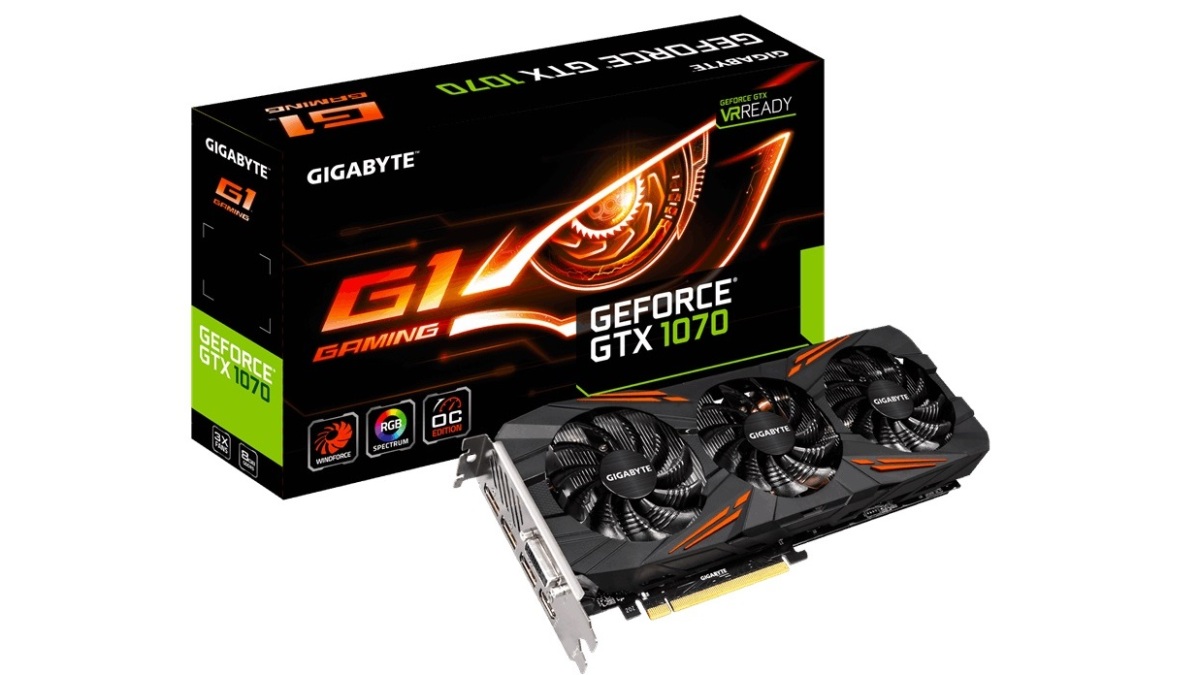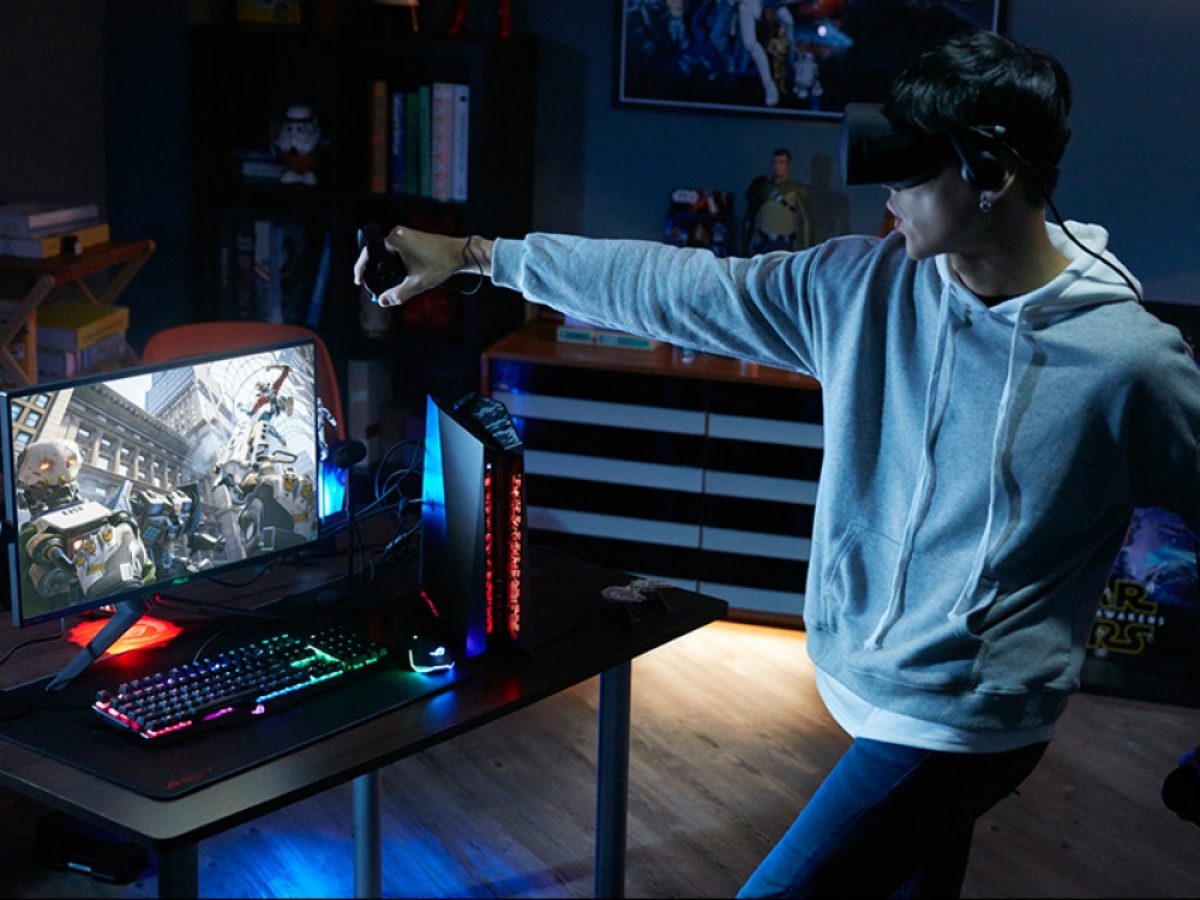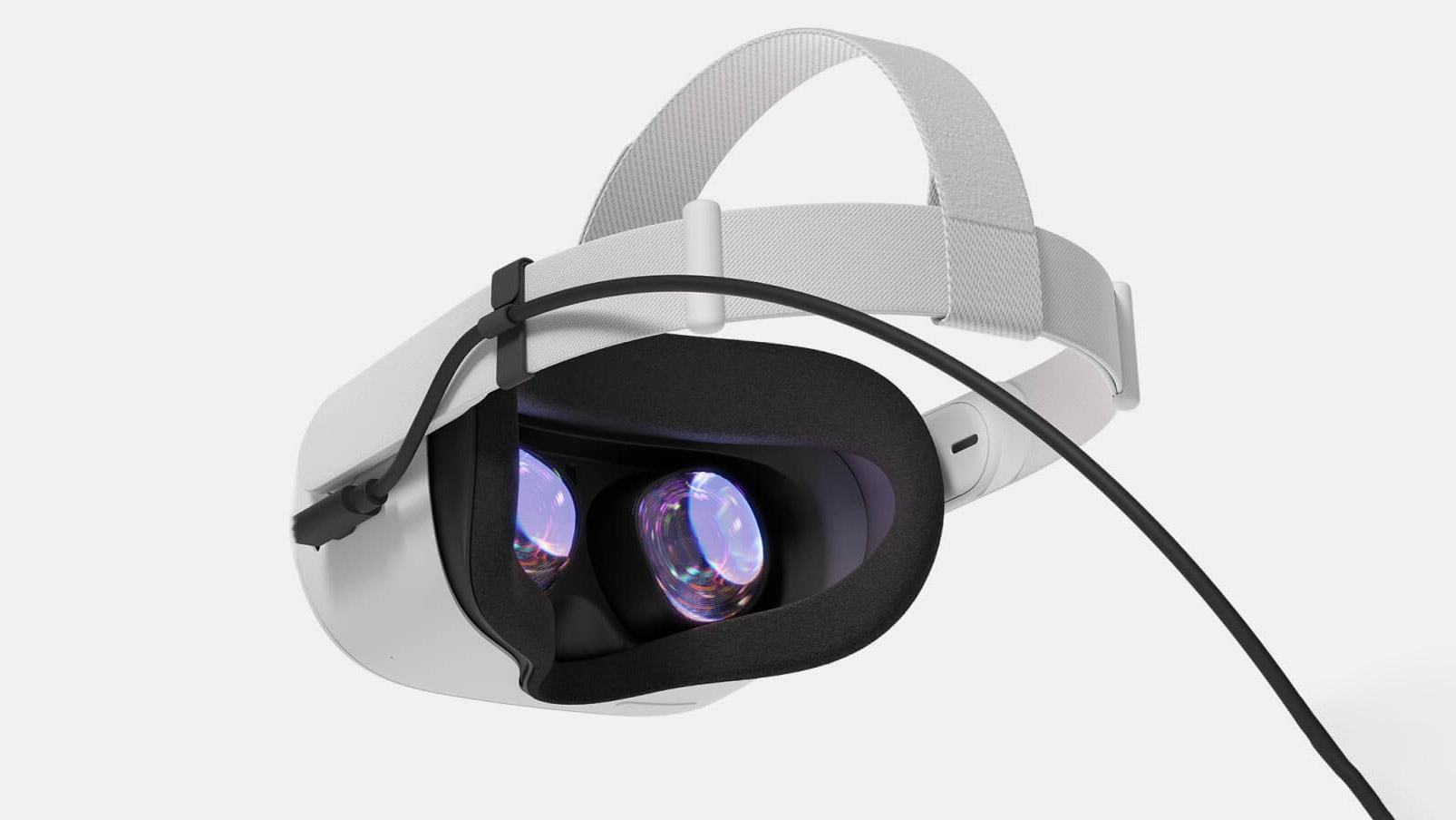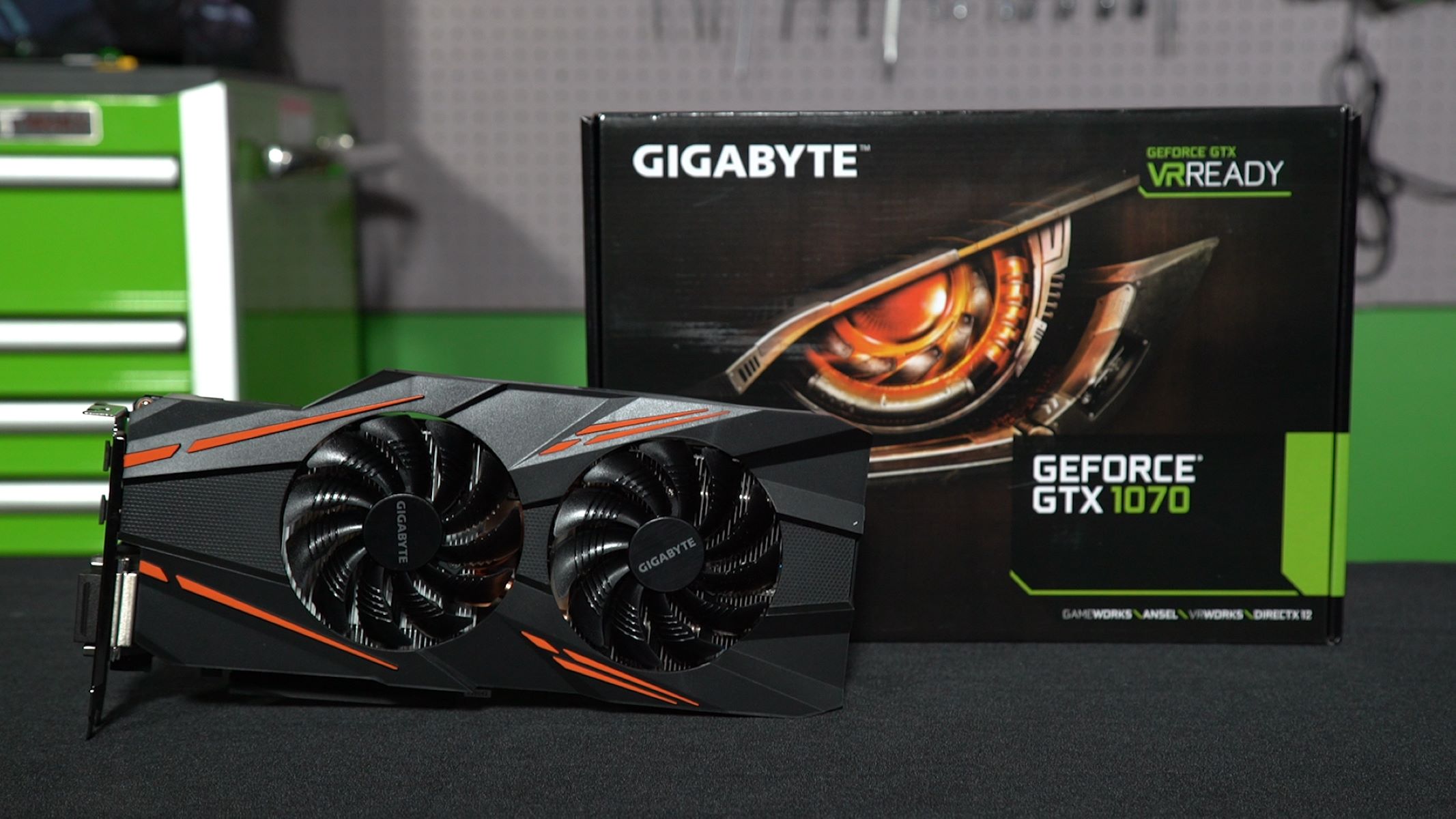Introduction
Virtual Reality (VR) has revolutionized the way we interact with technology, immersing us in a digital world that feels incredibly real. From gaming to simulations and even educational experiences, VR offers a whole new level of immersion and engagement. However, to truly enjoy the breathtaking visuals and seamless gameplay that VR delivers, you need a powerful graphics card that can handle the intensive demands of virtual reality.
So, what exactly is a graphics card? In simple terms, a graphics card is a specialized hardware component that processes and renders images, videos, and animations. It is responsible for generating and displaying the stunning visuals you see on your screen. When it comes to VR, the graphics card plays a crucial role in rendering two separate images simultaneously, one for each eye, to create a seamless 3D experience.
Unlike traditional gaming, VR requires a higher level of performance and graphical fidelity to maintain a smooth and immersive experience. This is where a dedicated VR graphics card comes into play. A dedicated VR graphics card is specifically designed to handle the demanding requirements of virtual reality, delivering smoother frame rates, minimal latency, and highly detailed graphics.
Without a dedicated VR graphics card, you may experience lag, stuttering, and lower image quality in your VR experiences. To ensure optimal performance, it is important to have a graphics card that meets the recommended specifications for VR.
In this article, we will explore the minimum VR requirements and recommended graphics cards that will take your virtual reality experiences to the next level. Whether you’re an avid gamer, a professional designer, or simply someone looking to explore the immersive world of VR, choosing the right graphics card is essential for a seamless and enjoyable VR experience.
What is Virtual Reality (VR)?
Virtual Reality (VR) is a technology that strives to simulate an immersive and interactive experience in a computer-generated environment. By using a combination of hardware and software, VR allows users to feel as if they are physically present in a digital world. Through the use of specialized headsets or goggles, users can experience a three-dimensional environment that responds to their movement and actions.
The core concept of VR is to create a sense of presence, tricking the user’s brain into believing that the virtual environment is real. This is achieved through a variety of immersive techniques, such as stereoscopic displays that provide depth perception, spatial audio that mimics real-world sounds, and motion tracking that captures the user’s movements and translates them into the virtual world.
VR is not limited to gaming. It has found applications in various industries, including healthcare, education, engineering, and entertainment. In healthcare, VR is used for medical training and therapy simulations. In education, it offers immersive learning experiences, allowing students to explore historical sites or dive into the depths of the ocean. In engineering, VR aids in visualizing and designing complex structures. In entertainment, VR provides an unparalleled level of immersion for gaming, movies, and interactive experiences.
One of the key advantages of VR is its ability to transport users to places and situations that are otherwise impossible or difficult to access. From exploring distant planets to walking through ancient ruins, VR opens up a world of possibilities for exploration and discovery.
However, VR is not without its challenges. The technology requires significant computing power and graphical capabilities to deliver a smooth and realistic experience. This is where the graphics card plays a crucial role. A powerful graphics card is essential to handle the complex visual rendering required for VR and ensure a high-quality and lag-free experience.
With VR continuously evolving and pushing the boundaries of what is possible, the demand for advanced graphics cards specifically designed for virtual reality is on the rise. In the next section, we will delve deeper into why a dedicated graphics card is necessary for VR and explore the minimum requirements for a seamless VR experience.
Why do you need a dedicated graphics card for VR?
Virtual Reality (VR) is a highly immersive and visually demanding technology that requires significant computing power to deliver a seamless experience. While your computer’s integrated graphics might be sufficient for basic tasks and older games, they are often insufficient to handle the complex rendering and processing required for VR.
Here are some reasons why a dedicated graphics card is essential for VR:
Powerful Performance: VR applications require a high frame rate, typically around 90 frames per second (FPS), to avoid motion sickness and maintain a smooth, immersive experience. A dedicated VR graphics card is optimized to handle the demanding requirements of VR, delivering the necessary performance to achieve these high frame rates and eliminate lag or stuttering.
Realistic Visuals: VR relies on highly detailed and realistic visuals to create an immersive environment. A dedicated graphics card is designed to handle complex shading, lighting, and texture rendering, resulting in stunning graphics with vivid colors and lifelike details. This level of graphical fidelity enhances the sense of presence and immersion, making the virtual world feel more real.
Reduced Latency: Latency refers to the time it takes for a system to respond to your actions. In VR, minimizing latency is crucial to maintain a sense of responsiveness and prevent motion sickness. Dedicated VR graphics cards employ advanced technologies, such as NVIDIA’s VR Works or AMD’s LiquidVR, which reduce latency and ensure a smooth and fluid experience.
Optimized VR Software: VR hardware and software are designed to work together seamlessly. Dedicated graphics cards often come bundled with specialized software drivers that are specifically optimized for VR. These drivers ensure compatibility, performance enhancements, and stability, making your VR experience more enjoyable and hassle-free.
Future-Proofing: Investing in a dedicated VR graphics card ensures that your system is capable of running future VR applications and experiences. As VR technology continues to evolve and graphics requirements become more demanding, having a dedicated graphics card ensures that you’ll be able to enjoy the latest VR content without having to upgrade your entire system.
Overall, a dedicated graphics card offers the power, performance, and optimization needed to fully experience VR. It provides the horsepower required to render complex visuals, reduce latency, and deliver a smooth and immersive VR experience. Whether you’re a serious gamer or a professional exploring VR applications, investing in a dedicated graphics card is essential to unlock the full potential of virtual reality.
Minimum VR Requirements
For a seamless and enjoyable VR experience, it is essential to meet the minimum hardware requirements. While the exact specifications may vary depending on the VR headset and software you are using, here are the basic minimum requirements to consider:
Graphics Card: The graphics card is the most crucial component for VR. A dedicated VR-ready graphics card is recommended, such as the NVIDIA GeForce GTX 970 or AMD Radeon RX 480. These cards offer sufficient power and performance to handle VR applications and deliver smooth framerates.
Processor: A capable processor is essential to handle the complex calculations required for VR. A quad-core processor, such as an Intel Core i5 or AMD Ryzen 5, is recommended to ensure smooth performance and prevent bottlenecks.
Memory (RAM): VR applications require a significant amount of memory to run smoothly. A minimum of 8GB of RAM is recommended, although 16GB or higher is preferable for optimal performance and multitasking.
Storage: VR games and applications can consume a substantial amount of storage space. It is recommended to have a solid-state drive (SSD) in addition to a traditional hard drive (HDD) to ensure faster load times and smoother performance.
Operating System: Ensure that your operating system (OS) is compatible with the VR headset and software you plan to use. Most VR systems support Windows 10, so it is recommended to have the latest version.
Connectivity: VR headsets typically require multiple ports for connectivity. Ensure that your system has the necessary ports, such as HDMI or DisplayPort, to connect the VR headset and any additional accessories.
Additional Requirements: Depending on the VR system, you may need additional accessories such as motion controllers or external sensors. These devices enhance the interactive and immersive aspects of VR and should be considered when setting up your VR-ready system.
It is important to note that meeting the minimum requirements does not guarantee the best VR experience. These requirements are the bare minimum to run VR applications. To fully enjoy the immersive world of VR, it is recommended to exceed the minimum requirements and opt for more powerful hardware components.
Before making any hardware upgrades or purchases, always check the specific requirements of your VR headset and software to ensure compatibility and optimal performance. Upgrading your system beyond the minimum requirements will future-proof your setup and allow you to fully explore the possibilities of virtual reality.
Recommended VR Graphics Cards
When it comes to choosing a graphics card for VR, it is important to select a model that offers sufficient power, performance, and features to deliver a smooth and immersive virtual reality experience. Here are some of the highly recommended VR graphics cards:
NVIDIA GeForce RTX 2080 Ti: The NVIDIA GeForce RTX 2080 Ti is considered one of the most powerful consumer-grade graphics cards available. With its exceptional performance and ray-tracing capabilities, it delivers stunning visuals and highly immersive VR experiences. It offers a significant boost in performance compared to previous-generation graphics cards, making it an excellent choice for demanding VR applications and games.
NVIDIA GeForce RTX 2080 Super: The NVIDIA GeForce RTX 2080 Super is another high-end graphics card ideal for VR. It offers a balance between performance and affordability, delivering a smooth and immersive VR experience. With its advanced features, including real-time ray tracing and AI-powered rendering, the RTX 2080 Super ensures realistic visuals and exceptional performance for VR enthusiasts.
NVIDIA GeForce RTX 2070 Super: The NVIDIA GeForce RTX 2070 Super is a more cost-effective option that still provides excellent performance for VR. With its powerful GPU and ray tracing capabilities, it delivers high-quality visuals and smooth VR gameplay. The RTX 2070 Super is a popular choice for gamers and VR content creators looking for a solid graphics card that won’t break the bank.
AMD Radeon RX 5700 XT: The AMD Radeon RX 5700 XT is a top-tier graphics card from AMD, offering an impressive performance-to-price ratio. With its powerful GPU and innovative features such as Radeon Anti-Lag and Radeon Image Sharpening, it delivers exceptional VR performance and quality. The Radeon RX 5700 XT is an excellent choice for budget-conscious users who still want a high-performance VR graphics card.
AMD Radeon RX 5700: The AMD Radeon RX 5700 is another solid mid-range option for VR. It provides excellent performance and reliability, making it a popular choice among gamers and VR enthusiasts. With its advanced features and support for the latest technologies such as FreeSync, the RX 5700 delivers a smooth and immersive VR experience without breaking the bank.
These are just a few of the recommended VR graphics cards available on the market. It is important to consider factors such as budget, system compatibility, and specific VR requirements when making your decision. Additionally, always ensure that the graphics card you choose meets the minimum requirements of your VR headset and software.
Upgrading to a dedicated VR graphics card will significantly enhance your VR experience, providing you with smoother framerates, realistic visuals, and reduced latency. Whether you’re a gamer, designer, or enthusiast, investing in a powerful VR graphics card will unlock the full potential of virtual reality and allow you to immerse yourself in a whole new dimension of entertainment.
NVIDIA GeForce RTX 2080 Ti
The NVIDIA GeForce RTX 2080 Ti is the pinnacle of graphics card technology and is widely regarded as one of the most powerful options available for VR enthusiasts. This high-end graphics card offers exceptional performance and advanced features that take virtual reality to a whole new level.
One of the standout features of the RTX 2080 Ti is its real-time ray tracing capability. Ray tracing technology simulates the behavior of light, creating incredibly realistic lighting effects and reflections in real-time. This adds a level of visual fidelity and immersion that enhances the VR experience to new heights.
Packed with 4352 CUDA cores and 11GB of GDDR6 VRAM, the RTX 2080 Ti delivers exceptional performance in even the most demanding VR applications and games. The high number of CUDA cores allows for efficient rendering and processing of complex graphics, ensuring smooth frame rates and minimal latency.
With dedicated hardware, such as Tensor Cores and RT Cores, the RTX 2080 Ti harnesses the power of AI and ray tracing to deliver stunning visuals. The Tensor Cores enable deep learning super sampling (DLSS), a rendering technique that uses AI to upscale lower-resolution images, effectively improving performance while maintaining high-quality visuals.
Furthermore, the RTX 2080 Ti supports VR-specific features such as NVIDIA VRSS (Variable Rate Supersampling), which dynamically adjusts the level of detail in specific areas of the screen based on eye movement, reducing the GPU workload and improving performance without sacrificing visual quality.
Not only is the RTX 2080 Ti an excellent choice for VR, but it also excels in traditional gaming, content creation, and other graphics-intensive tasks. Its immense power and performance make it future-proof, allowing you to tackle upcoming VR experiences with ease.
It is worth noting that the RTX 2080 Ti comes at a premium price point, making it a considerable investment for VR enthusiasts. However, if you are serious about pushing the boundaries of virtual reality and want the absolute best graphics card available, the RTX 2080 Ti is the clear choice.
Whether you are exploring the immersive world of VR games, creating VR content, or engaging in professional design work, the NVIDIA GeForce RTX 2080 Ti delivers unparalleled performance and visual fidelity. It sets a new standard for VR graphics cards, providing the power, realism, and immersive experience that VR enthusiasts crave.
NVIDIA GeForce RTX 2080 Super
The NVIDIA GeForce RTX 2080 Super is a high-end graphics card that offers a fantastic balance between performance and affordability, making it an excellent choice for VR enthusiasts who want a powerful and cost-effective solution. With its advanced features and improved performance over its predecessors, the RTX 2080 Super delivers an exceptional VR experience.
The RTX 2080 Super builds upon the foundation set by the original RTX 2080, offering enhanced performance and capabilities. With 3072 CUDA cores and 8GB of GDDR6 VRAM, it provides ample power for running demanding VR titles with smooth frame rates and minimal latency.
One of the standout features of the RTX 2080 Super is its support for real-time ray tracing. Ray tracing technology simulates the behavior of light, resulting in stunningly realistic lighting effects and reflections in VR environments. With the RTX 2080 Super, you can enjoy a heightened level of visual fidelity and immersion in your VR experiences.
Additionally, the RTX 2080 Super features NVIDIA’s DLSS (Deep Learning Super Sampling) technology, which uses AI to upscale lower-resolution images, improving performance without sacrificing visual quality. This AI-powered rendering technique allows for a smoother and more immersive VR experience, as it relieves some of the rendering load on the GPU.
To further optimize VR performance, the RTX 2080 Super supports features like Variable Rate Shading (VRS) and VRSS (Variable Rate Supersampling). VRS allows developers to prioritize graphics quality on specific areas of the screen that require more detail, reducing the GPU workload. VRSS, on the other hand, dynamically adjusts the level of detail in areas of the screen based on eye movement, ensuring sharper visuals where it matters most and boosting performance.
While the RTX 2080 Super may not have the sheer power of its more expensive sibling, the RTX 2080 Ti, it still provides exceptional VR performance and visual fidelity at a relatively lower price point. It is a popular choice among gamers and VR enthusiasts who want a high-performance graphics card without breaking the bank.
Whether you’re exploring the immersive world of VR gaming, creating VR content, or engaging in other graphics-intensive tasks, the NVIDIA GeForce RTX 2080 Super delivers an outstanding VR experience. It strikes the perfect balance between power, affordability, and advanced features, ensuring that you can fully enjoy the next level of immersion that VR brings.
NVIDIA GeForce RTX 2070 Super
The NVIDIA GeForce RTX 2070 Super is a high-performance graphics card that offers impressive VR capabilities and a compelling price-to-performance ratio. With its enhanced features and powerful performance, the RTX 2070 Super is a solid choice for VR enthusiasts looking for an excellent balance between affordability and VR performance.
Equipped with 2560 CUDA cores and 8GB of GDDR6 VRAM, the RTX 2070 Super delivers smooth and immersive VR experiences. It provides ample processing power to handle demanding VR applications and games, ensuring high frame rates and minimal stuttering or latency.
The RTX 2070 Super supports real-time ray tracing, a feature that simulates the behavior of light to create realistic lighting and reflections in VR environments. This enhances the visual fidelity and immersion of VR experiences, elevating them to a new level of realism.
With NVIDIA’s DLSS (Deep Learning Super Sampling) technology, the RTX 2070 Super uses artificial intelligence to upscale lower-resolution images, resulting in improved performance without sacrificing visual quality. This AI-powered rendering technique allows for a smoother VR experience with enhanced graphics.
In addition to DLSS, the RTX 2070 Super supports other VR-specific features to optimize performance. Variable Rate Shading (VRS) allows developers to allocate more resources to areas of the VR scene that require higher detail, reducing the GPU workload. This results in improved performance while maintaining visual quality.
The RTX 2070 Super also supports VRSS (Variable Rate Supersampling), which dynamically adjusts the level of detail based on eye movements, providing sharp visuals where it matters most and improving overall performance during VR gameplay.
While the RTX 2070 Super is not as powerful as higher-end graphics cards like the RTX 2080 Ti or RTX 2080 Super, it still offers impressive performance and value for VR enthusiasts. It strikes a great balance between price and performance, providing a smooth and immersive VR experience without breaking the bank.
Whether you’re gaming in VR, creating virtual reality content, or engaging in other demanding VR applications, the NVIDIA GeForce RTX 2070 Super offers a robust and cost-effective solution. With its powerful GPU and advanced features, it is capable of delivering high-quality visuals, smooth gameplay, and an immersive VR experience.
AMD Radeon RX 5700 XT
The AMD Radeon RX 5700 XT is a high-performance graphics card that offers a compelling option for VR enthusiasts. With its advanced features, impressive performance, and competitive pricing, the RX 5700 XT is a solid choice for those looking to experience virtual reality at an affordable cost.
Featuring 2560 stream processors and 8GB of GDDR6 VRAM, the RX 5700 XT delivers strong performance for VR applications and games. It provides smooth gameplay with high frame rates and minimal latency, ensuring an immersive VR experience.
One of the key advantages of the RX 5700 XT is AMD’s RDNA architecture, which brings substantial improvements in power efficiency and performance over previous generations. This architecture allows the RX 5700 XT to handle the demanding requirements of VR, delivering stunning visuals and smooth gameplay.
The RX 5700 XT supports AMD’s Radeon Anti-Lag technology, which reduces input latency, resulting in a more responsive and seamless VR experience. This technology is particularly beneficial in VR where low latency is crucial to prevent motion sickness and improve overall immersion.
With features like Radeon Image Sharpening, the RX 5700 XT enhances visual clarity by intelligently sharpening in-game visuals without sacrificing performance. This ensures that VR environments look crisper and more detailed, further enhancing the immersion factor.
Thanks to its efficient cooling system, the RX 5700 XT runs relatively cool and quiet, making it suitable for VR enthusiasts who prefer a quieter and more comfortable VR experience. The card also supports Radeon™ VR Ready Premium, ensuring compatibility and optimal performance with popular VR headsets.
While the RX 5700 XT may not have hardware accelerated ray tracing like some higher-end graphics cards, it still delivers outstanding performance at a more affordable price point. It offers a strong balance between price and performance, making it a popular choice among gamers and VR enthusiasts on a budget.
Whether you’re gaming, creating VR content, or exploring immersive virtual reality experiences, the AMD Radeon RX 5700 XT provides a powerful and cost-effective solution. With its impressive performance, advanced features, and competitive price, it delivers a solid VR experience without sacrificing your wallet.
AMD Radeon RX 5700
The AMD Radeon RX 5700 is a mid-range graphics card that offers a great balance of performance and affordability for VR enthusiasts. With its impressive specifications and AMD’s advanced features, the RX 5700 provides a solid VR experience without breaking the bank.
Equipped with 2304 stream processors and 8GB of GDDR6 VRAM, the RX 5700 delivers smooth performance for VR applications and games. It provides a reliable and immersive VR experience with its high frame rates and minimal latency.
The RX 5700 features AMD’s RDNA architecture, bringing improvements in performance and power efficiency compared to previous generations. This architecture enhances the card’s VR capabilities, delivering impressive visuals and smooth VR gameplay.
One of the standout features of the RX 5700 is AMD’s Radeon Anti-Lag technology, which reduces input latency, allowing for a more responsive and engaging VR experience. This technology is highly beneficial in VR, where low latency is crucial to maintain immersion and prevent motion sickness.
Radeon Image Sharpening is another notable feature of the RX 5700, providing enhanced visual clarity by intelligently sharpening in-game visuals without impacting performance. This ensures that VR environments appear detailed and crisp, further enhancing the immersion factor.
Thanks to its efficient cooling system, the RX 5700 runs relatively cool and quiet, offering a comfortable VR experience without excessive noise. Additionally, the card is compatible with AMD’s Radeon™ VR Ready Premium, ensuring smooth performance and compatibility with popular VR headsets.
While the RX 5700 does not have hardware accelerated ray tracing like higher-end graphics cards, it still provides strong performance and value for the price. It strikes a good balance between cost and performance, making it a popular choice for VR enthusiasts on a budget.
Whether you’re gaming in VR, creating VR content, or exploring immersive virtual reality experiences, the AMD Radeon RX 5700 offers a reliable and affordable solution. With its solid performance, advanced features, and reasonable price, it provides an enjoyable VR experience without breaking the bank.
Final Thoughts
Choosing the right graphics card for virtual reality is key to unlocking a truly immersive and visually stunning VR experience. Whether you opt for the high-end NVIDIA GeForce RTX 2080 Ti or the more budget-friendly AMD Radeon RX 5700, these graphics cards offer the power and performance needed to handle the demanding requirements of VR applications and games.
It’s important to consider your specific needs and budget when selecting a VR graphics card. While the higher-end options provide cutting-edge features like real-time ray tracing and AI-powered rendering, the mid-range options still offer strong performance and value without compromising on the VR experience.
Additionally, remember to check the compatibility and minimum hardware requirements of your VR headset and software to ensure a smooth and optimal VR experience. Upgrading other components of your system, such as the processor and memory, can also complement the performance of your chosen graphics card and further enhance your VR experience.
Ultimately, the choice between NVIDIA and AMD graphics cards comes down to personal preference, budget, and performance requirements. Both brands offer solid options for VR gaming and content creation, so consider factors such as price, features, and compatibility to make the best decision for your specific needs.
Virtual reality continues to evolve rapidly, with new technologies and innovations constantly pushing the boundaries of what’s possible. As VR experiences become more immersive and demanding, it’s essential to invest in a graphics card that can keep up with the advancements and deliver a seamless and unparalleled VR experience.
Regardless of the graphics card you choose, diving into the world of virtual reality is an exciting journey that promises thrilling gaming experiences, immersive simulations, and endless possibilities in fields like education, design, and entertainment. So, equip yourself with a powerful VR graphics card, put on your headset, and get ready to embark on a virtual adventure like no other!







